RNA editing: emerging from CRISPR’s shadow
BioPharma Drive: Drug Pricing
OCTOBER 22, 2024
Early study data from Wave Life Sciences suggests how editing RNA may yield viable medicines. Large and small drugmakers say such results are just the start.
This site uses cookies to improve your experience. To help us insure we adhere to various privacy regulations, please select your country/region of residence. If you do not select a country, we will assume you are from the United States. Select your Cookie Settings or view our Privacy Policy and Terms of Use.
Cookies and similar technologies are used on this website for proper function of the website, for tracking performance analytics and for marketing purposes. We and some of our third-party providers may use cookie data for various purposes. Please review the cookie settings below and choose your preference.
Used for the proper function of the website
Used for monitoring website traffic and interactions
Cookies and similar technologies are used on this website for proper function of the website, for tracking performance analytics and for marketing purposes. We and some of our third-party providers may use cookie data for various purposes. Please review the cookie settings below and choose your preference.

BioPharma Drive: Drug Pricing
OCTOBER 22, 2024
Early study data from Wave Life Sciences suggests how editing RNA may yield viable medicines. Large and small drugmakers say such results are just the start.

Science Daily: Pharmacology News
APRIL 5, 2024
Certain RNA molecules in the nerve cells in the brain last a life time without being renewed. RNAs are generally short-lived molecules that are constantly reconstructed to adjust to environmental conditions. Neuroscientists have now demonstrated that this.
This site is protected by reCAPTCHA and the Google Privacy Policy and Terms of Service apply.

Science Daily: Pharmacology News
JULY 2, 2024
The new study focuses on critical snippets of RNA in the tiny, transparent roundworm Caenorhabditis elegans (C. The study provides a detailed map of the 3'UTR regions of RNA in C. 3'UTRs (untranslated regions) are segments of RNA involved in gene regulation.

Science Daily: Pharmacology News
JUNE 24, 2024
Researchers have harnessed a bacterial immune defense system, known as CRISPR, to efficiently and precisely control the process of RNA splicing.

Science Daily: Pharmacology News
FEBRUARY 17, 2025
Scientists have developed a lipid nanoparticle system capable of delivering messenger RNA (mRNA) to the brain via intravenous injection, a challenge that has long been limited by the protective nature of the blood-brain barrier.

Science Daily: Pharmacology News
NOVEMBER 21, 2024
Researchers have developed a groundbreaking microscopy method that enables detailed three-dimensional (3D) RNA analysis at cellular resolution in whole intact mouse brains. The new method, called TRISCO, has the potential to transform our understanding of brain function, both in normal conditions and in disease, according to the new study.

Science Daily: Pharmacology News
SEPTEMBER 7, 2023
By adding synergistic self-adjuvanting properties to Covid-19 RNA vaccines, researchers showed they could significantly boost the immune response generated in mice.

Science Daily: Pharmacology News
SEPTEMBER 19, 2023
A new study shows the isolation and sequencing of more than a century-old RNA molecules from a Tasmanian tiger specimen preserved at room temperature in a museum collection. This resulted in the reconstruction of skin and skeletal muscle transcriptomes from an extinct species for the first time.

BioPharma Drive: Drug Pricing
SEPTEMBER 19, 2023
AIRNA is one of several biotechs to debut plans for target alpha-1 antitrypsin deficiency in recent years, with competitors such as AlveoGene, Wave Life Sciences and Arrowhead Pharmaceuticals.
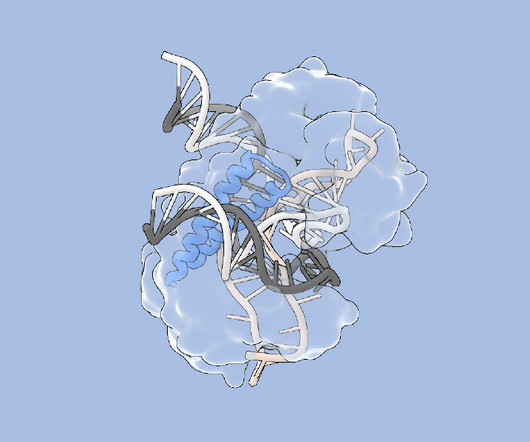
Broad Institute
FEBRUARY 27, 2025
An ancient RNA-guided system could simplify delivery of gene editing therapies By Corie Lok February 27, 2025 Breadcrumb Home An ancient RNA-guided system could simplify delivery of gene editing therapies The programmable proteins are compact, modular, and can be directed to modify DNA in human cells. Lisa Yang and Hock E.

Science Daily: Pharmacology News
AUGUST 21, 2024
billion years ago, a critical step in the transition from tiny beads of RNA to every bacterium, plant, animal, and human that ever lived. New research shows that rainwater could have helped create a meshy wall around protocells 3.8

Science Daily: Pharmacology News
AUGUST 2, 2024
A team has demonstrated a mechanism that could have enabled the first RNA molecules to stabilize in the primordial soup. When two RNA strands combine, their stability and lifespan increase significantly. How were complex molecules able to form and remain intact for prolonged periods without disintegrating?

BioPharma Drive: Drug Pricing
JUNE 3, 2024
With new modalities such as gene and cell therapies, RNA therapeutics, complex biologics and more, today’s science brings unprecedented opportunities to address diseases that have long remained out of reach.

Science Daily: Pharmacology News
OCTOBER 9, 2024
161,979 new RNA viruses have been discovered using a machine learning tool that researchers believe will vastly improve the mapping of life on Earth and could aid in the identification of many millions more viruses yet to be characterized.

Science Daily: Pharmacology News
AUGUST 30, 2024
The team discovered that an RNA molecule, rather than a protein as previously thought, plays a pivotal role in determining the distribution of black pigment on butterfly wings. Researchers have uncovered a surprising genetic mechanism that influences the vibrant and complex patterns on butterfly wings.

Science Daily: Pharmacology News
JUNE 8, 2023
The octopuses achieve this by editing their RNA, the messenger molecule between DNA and proteins. Researchers report that two-spot octopuses adapt to seasonal temperature shifts by producing different neural proteins under warm versus cool conditions.

Science Daily: Pharmacology News
JANUARY 29, 2025
Scientists detected all five nucleobases -- building blocks of DNA and RNA -- in samples returned from asteroid Bennu by NASA's OSIRIS-REx mission.
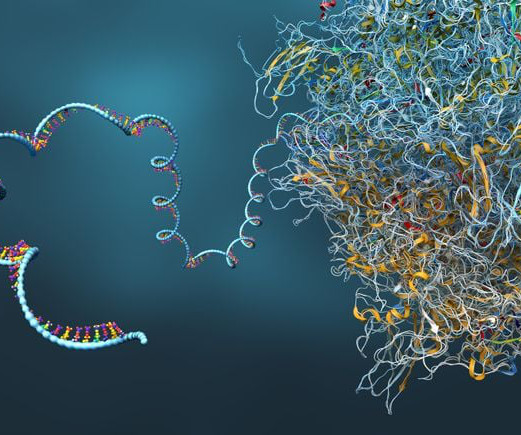
BioPharma Drive: Drug Pricing
JANUARY 23, 2024
J&J and Bristol Myers joined the latest funding round for the startup, which was led by the newly launched Mirae Asset Capital Life Science.

Science Daily: Pharmacology News
MAY 29, 2024
Functional analysis based on these structures also revealed how a 'prime editor' could achieve reverse transcription, synthesizing DNA from RNA, without 'cutting' both strands of the double helix. New research has determined the spatial structure of various processes of a novel gene-editing tool called 'prime editor.'

Science Daily: Pharmacology News
JANUARY 16, 2024
RNA is thought to have sparked the origin of life by self-copying. Researchers have now revealed the atomic structure of an 'RNA copy machine' through cryo-EM. This breakthrough sheds light on a primordial RNA world and fuels advancements in RNA nanotechnology and medicine.
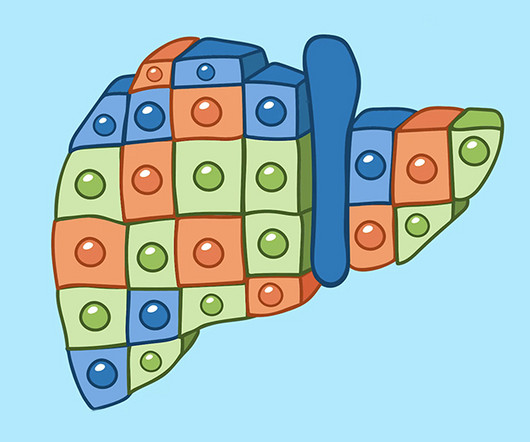
Broad Institute
MARCH 12, 2025
Related group Spatial Technology Platform Related news Q&A: How a Broad team uses cutting-edge spatial technologies to enable new science Recently, scientists have been able to explore gene circuitry in individual cells using methods that suppress particular genes and measure the impact on the expression of other genes.

Drug Target Review
JUNE 15, 2023
In this article Drug Target Review’s Izzy Wood spoke to Sam Hasson, Director of Target Biology at Rgenta Therapeutics, a biotech firm in Massachusetts, US, that aims to develop small molecule therapeutics to target RNA processing. The field is faced with a number of obstacles that require specifically assay technologies to surmount.

Science Daily: Pharmacology News
JULY 27, 2023
In a step forward in the development of genetic medicines, researchers have developed a proof-of-concept model for delivering gene editing tools to treat blood disorders, allowing for the modification of diseased blood cells directly within the body.

Science Daily: Pharmacology News
DECEMBER 20, 2023
A research team has uncovered a previously undetected mechanism in mice -- starring the genetic molecule RNA -- that could explain how each sensory cell, or neuron, in mammalian noses becomes tailored to detect a specific odor chemical.

Science Daily: Pharmacology News
NOVEMBER 7, 2024
Genes contain instructions for making proteins, and a central dogma of biology is that this information flows from DNA to RNA to proteins. But only two percent of the human genome actually encodes proteins; the function of the remaining 98 percent remains largely unknown.

Broad Institute
MAY 14, 2024
William Studier for development of widely used protein- and RNA-production platform By Corie Lok May 14, 2024 Breadcrumb Home Merkin Prize in Biomedical Technology awarded to F. Merkin Prize in Biomedical Technology for his development of an efficient, scalable method of producing RNA and proteins in the laboratory.

Science Daily: Pharmacology News
AUGUST 30, 2023
Researchers applied a new technology to generate the full inventory of mutations in the bacterial species Escherichia coli where the antibiotic rifampicin attaches to and disables an essential bacterial enzyme known as RNA polymerase (RNAP).

Elrig
MARCH 25, 2025
This second ELRIG meeting on Therapeutic Oligonucleotides brings together esteemed scientists from academia, industry, and other members of the drug discovery community to explore the discovery, validation, and targeting of oligonucleotide-based drug candidates, including antisense oligonucleotides (ASOs) and small interfering RNA (siRNA).

Science Daily: Pharmacology News
JULY 5, 2023
This breakthrough was possible because of the novel findings, also presented in the study, that aberrant alternative splicing of messenger RNA (mRNA) plays a principal role in fragile X syndrome, the most common form of inherited intellectual disability and the most frequent single-gene cause of autism.

Drug Target Review
DECEMBER 6, 2024
This includes verifying the experimental design and understanding how the data was generated whether it was from RNA sequencing, mass spectrometry, or other biological assays. About the authors Dr Raminderpal Singh Dr Raminderpal Singh is a recognised visionary in the implementation of AI across technology and science-focused industries.
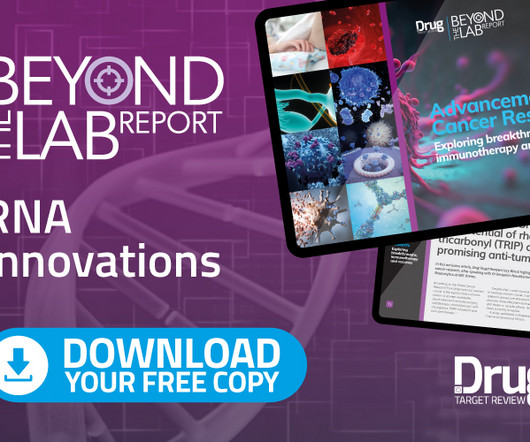
Drug Target Review
DECEMBER 6, 2023
Dear readers, RNA, or ribonucleic acid, plays a pivotal role in the intricate dance of cellular processes. We are committed to providing you with the highest quality content, and we believe that this report will deliver a different perspective on the topics covered.

PLOS: DNA Science
JUNE 8, 2023
What I love most about science in general, and genetics in particular, is when new findings upend everything we thought we knew about something. But some species control genetic responses another way – via RNA editing. Because the edits are in RNA, and not DNA, they are fleeting. ’ ” Rosenthal posed.
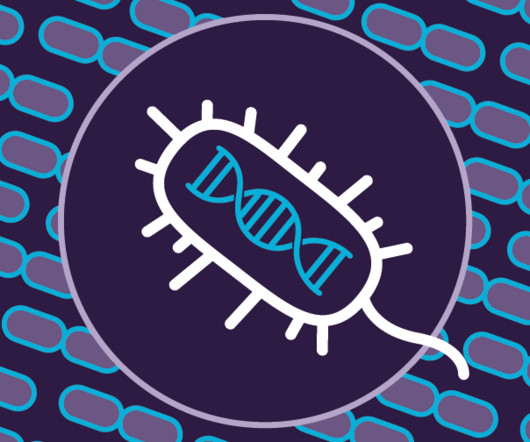
Broad Institute
NOVEMBER 23, 2023
The work appears today in Science. The scientists found a surprising number and diversity of CRISPR systems, including ones that could make edits to DNA in human cells, others that can target RNA, and many with a variety of other functions. They studied several of the new systems in greater detail in the lab. Online November 23, 2023.
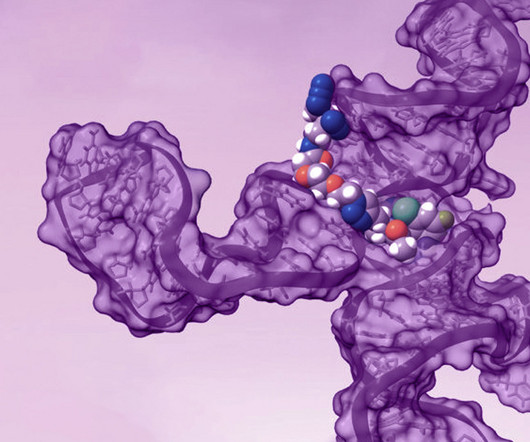
Dark Matter Blog
AUGUST 31, 2020
Our overall mission at Arrakis is to expand the set of “druggable” targets for small-molecule medicines to include RNA. Today, we are pleased to announce that our article describing one such platform: “ PEARL-seq, A Photoaffinity Platform for the Analysis of Small Molecule-RNA Interactions ” was published in ACS Chemical Biology.

Broad Institute
FEBRUARY 26, 2025
To address these challenges, we introduce a data-driven tree-based framework that incorporates uncertainty into RNA-seq data analysis. In the first part of the talk, I will discuss existing approaches for handling uncertainty and their limitations in RNA-seq data analysis before introducing TreeTerminus.

Broad Institute
SEPTEMBER 23, 2024
Using what they learned from these experiments, they developed a framework — ligation-enabled messenger RNA-oligonucleotide assembly, or LEGO — that enables researchers to chemically modify the structure of mRNA molecules and influence their interactions with the cell's protein-translation machinery, achieving desired therapeutic effects.

The Pharma Data
JANUARY 5, 2021
Durham, North Carolina-based Ribometrix announced a strategic collaboration deal with Genentech , a Roche company, to identify and advance novel RNA-targeted small molecule therapeutics. Targeting RNA is believed to be a way to develop therapeutics for so-called undruggable proteins. The first identifies the 3D RNA motifs.

Sygnature Discovery
SEPTEMBER 12, 2024
We’ve successfully tackled targets for: Unprecedented membrane proteins Intrinsically disordered proteins Refolding from inclusion bodies Large protein complexes Labelled proteins for NMR studies RNA structures by crystallography Across our capabilities Construct Design Structure-guided sequence design.

Drug Target Review
JULY 24, 2023
The results were published in Proceedings of National Academy of Sciences of United States of America (PNAS). Through phylogenetic analysis and microscopy techniques, they identified a nuclear-encoded apicoplast RNA polymerase σ subunit called ApSigma. The first identification was based on a bioinformatic analysis.

Codon
JANUARY 24, 2024
It is difficult to study complex diseases because science is often limited to tightly-controlled environments – and animal models – that don’t always accurately reflect the real world. A capillary shrinks over time – it’s a temporal process – but science is often limited to static snapshots.

Broad Institute
JANUARY 8, 2024
Now the researchers describe how they re-engineered both eVLPs and parts of the prime editing protein and RNA machinery to boost editing efficiency up to 170 times in human cells compared to the previous eVLPs that deliver base editors. They also delivered prime editors to the mouse brain, and did not detect any off-target editing.

Sygnature Discovery
SEPTEMBER 11, 2024
We’ve successfully tackled targets for: Unprecedented membrane proteins Intrinsically disordered proteins Refolding from inclusion bodies Large protein complexes Labelled proteins for NMR studies RNA structures by crystallography Across our capabilities Protein Expression & Purification Vast diversity of proteins produced.
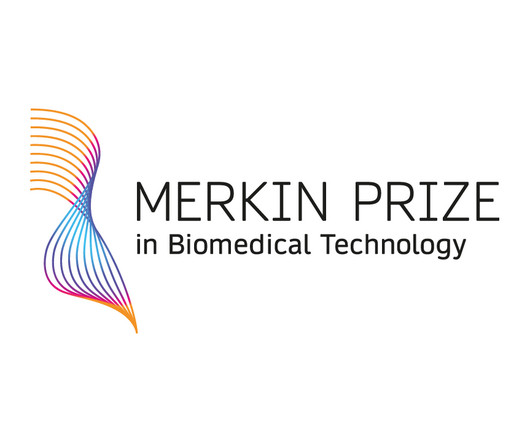
Broad Institute
JUNE 28, 2023
Today, scientists use these reactions to produce customizable DNA and RNA molecules that enable genetic sequencing, drug and vaccine development, pathogen tests, cancer diagnostics, and many aspects of basic biomedical research. “I Longer synthetic DNA and RNA molecules are also critical for modern biologic drugs.

Broad Institute
DECEMBER 6, 2023
Using single-cell RNA sequencing to analyze gene expression in individual cells, the researchers have found how 86 major cytokines affect 17 immune cell types in mice. Tags: Cell Circuits Program Immunology RNA sequencing The reference, called the Immune Dictionary , appears today in Nature. Paper cited Cui A et al.
Expert insights. Personalized for you.
We have resent the email to
Are you sure you want to cancel your subscriptions?


Let's personalize your content